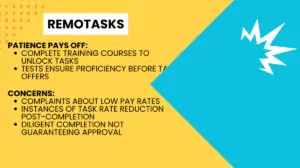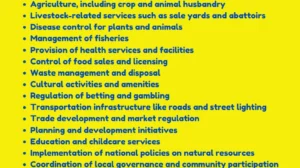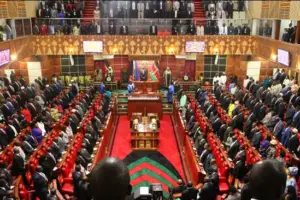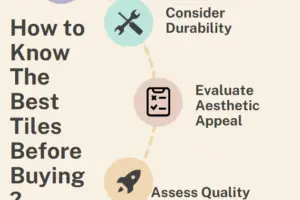
Variable expenses are the costs that change depending on how much you use a product or service, or how much you produce or sell.
Variable expenses are different from fixed expenses, which are the costs that stay the same regardless of your usage or production level.
In this article, we will explain what variable expenses are, give some examples, and show how they affect your budget and profitability.
What are Variable Expenses Examples?
Some common examples of variable expenses are:
- Electricity bill: The more you use electricity, the higher your bill will be. If you turn off the lights and appliances when not in use, you can reduce your electricity bill.
- Groceries: The more you eat, the more you spend on groceries. If you buy in bulk, use coupons, or cook at home, you can save money on groceries.
- Gasoline: The more you drive, the more you spend on gasoline. If you use public transportation, carpool, or bike, you can lower your gasoline expenses.
- Raw materials: The more you produce, the more raw materials you need. If you find cheaper or more efficient suppliers, you can reduce your raw material costs.
What is Meant by Variable Expenses?
Variable expenses are the costs that vary directly with the level of activity or output.
They are also called variable costs or operating expenses.
Variable expenses are important for both businesses and individuals because they affect the net income and cash flow.
For businesses, variable expenses are deducted from the revenue to calculate the gross profit.
Businesses then use the gross profit to pay for the fixed expenses and taxes, and the remaining amount is the net profit.
Therefore, lower variable expenses mean higher gross profit and net profit.
Individuals subtract variable expenses from their income to calculate their disposable income.
Businesses then use the disposable income to pay for the savings and investments, and the remaining amount is the discretionary income.
Therefore, lower variable expenses mean higher disposable income and discretionary income.
What are the 4 Variable Costs?
There are four main types of variable costs that businesses face:
- Direct materials: These are the raw materials that are directly used in the production process and can be traced to each unit of output. For example, wood for making furniture, flour for baking bread, or cotton for making clothes.
- Direct labour: These are the wages and salaries of the workers who are directly involved in the production process and can be traced to each unit of output. For example, carpenters for making furniture, bakers for baking bread, or tailors for making clothes.
- Variable overheads: These are the indirect costs that are related to the production process but cannot be traced to each unit of output. For example, electricity for running machines, water for cleaning equipment, or lubricants for maintaining machinery.
- Variable selling and administrative expenses: These are the indirect costs that are related to the selling and administrative activities but vary with the sales volume. For example, commissions for salespeople, advertising for promoting products, or shipping for delivering goods.
What does Variable Expense Mean in Business?
Variable expense means the cost that changes in proportion to the changes in the business activity or output.
Variable expense is an important concept in business because it helps to measure the efficiency and profitability of a business.
One way to measure the efficiency of a business is to calculate the contribution margin ratio.
The contribution margin ratio is the percentage of revenue that remains after deducting the variable expenses.
It shows how much each dollar of sales contributes to covering the fixed expenses and generating profit.
The formula for the contribution margin ratio is:
Contribution margin ratio=RevenueRevenue−Variable expenses
Another way to measure the profitability of a business is to calculate the break-even point.
The break-even point is the level of sales where the total revenue equals the total expenses (both fixed and variable).
It shows how much sales a business needs to make to avoid losses.
The formula for the break-even point in units is:
Break-even point in units=Contribution margin per unit fixed expenses
The formula for the break-even point in dollars is:
Break-even point in dollars=Contribution margin ratio fixed expenses
Conclusion
Variable expenses are the costs that change depending on how much you use a product or service, or how much you produce or sell.
They are different from fixed expenses, which are the costs that stay constant regardless of your usage or production level.
Variable expenses affect your budget and profitability by influencing your net income and cash flow.
By understanding what variable expenses are, how to calculate them, and how to manage them, you can improve your financial situation and achieve your goals.
If you found this article impressive follow for more on our blog as sampled below:
- Hotels in Ontario Canada: A Guide for Travelers and Celebrities
- White Jordans: The Ultimate Guide for Sneakerheads
- Faze Rug’s 2023 Net Worth, Height, Age, and Marital Status: What You Need to Know
- Georgia Marie Thompson: The Eldest Daughter of SNL Star Kenan Thompson
- What Happened To Sarah Marbeck: Beckham and Sarah Marbeck’s Relationship
- Christine Gacy: Meet Daughter of the Late Serial Killer John Wayne Gacy
- Mariah Bird’s Net Worth, Height, Age, Spouse, Family, Weight, Nationality, Bio, Career, Occupation



















































